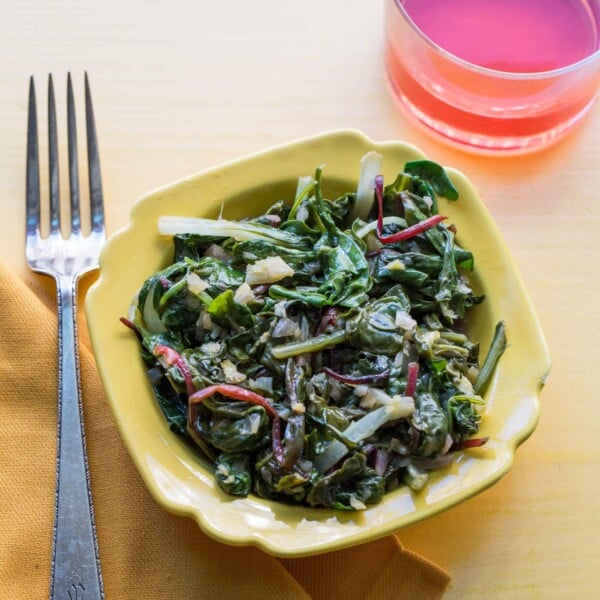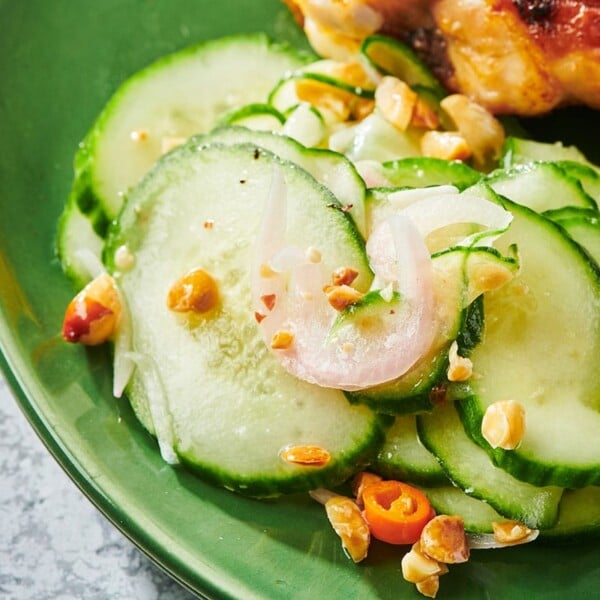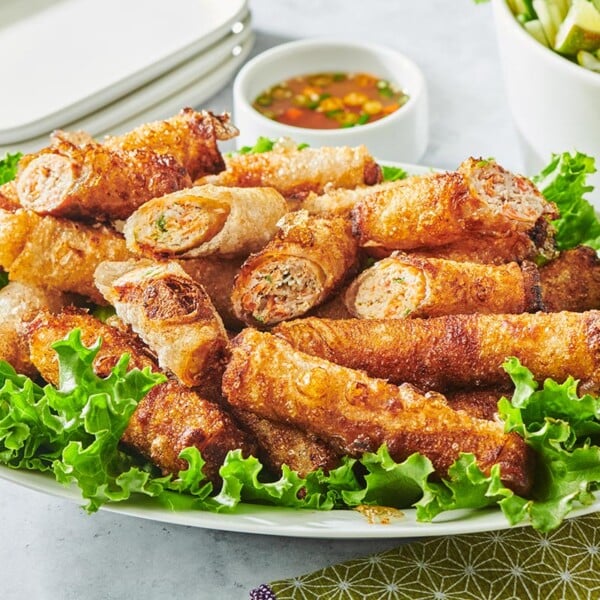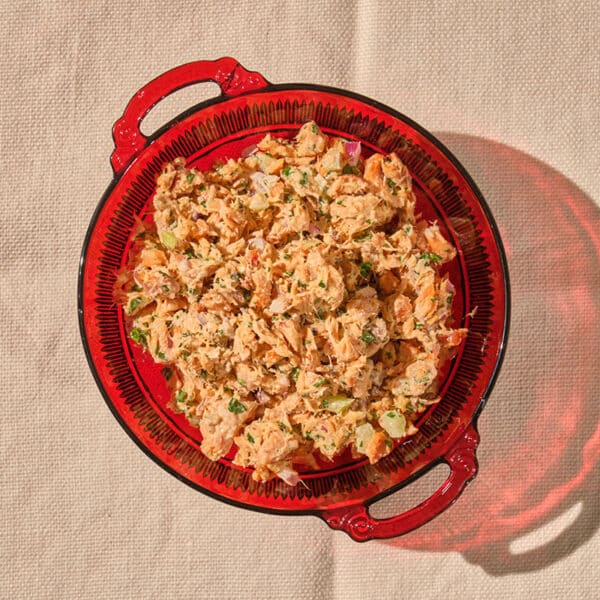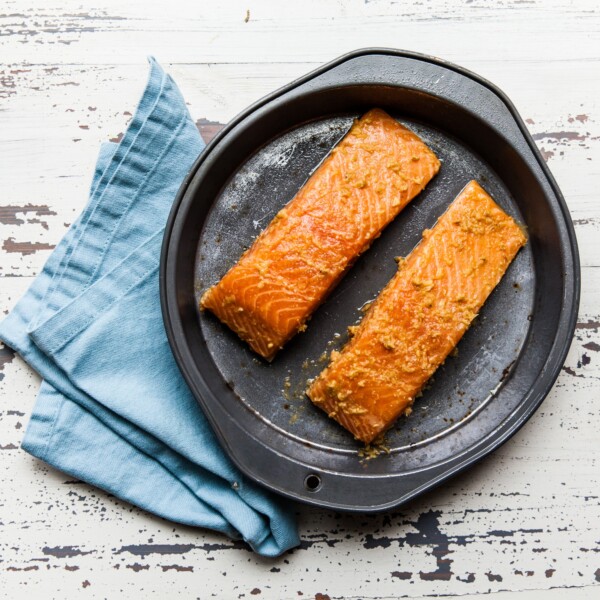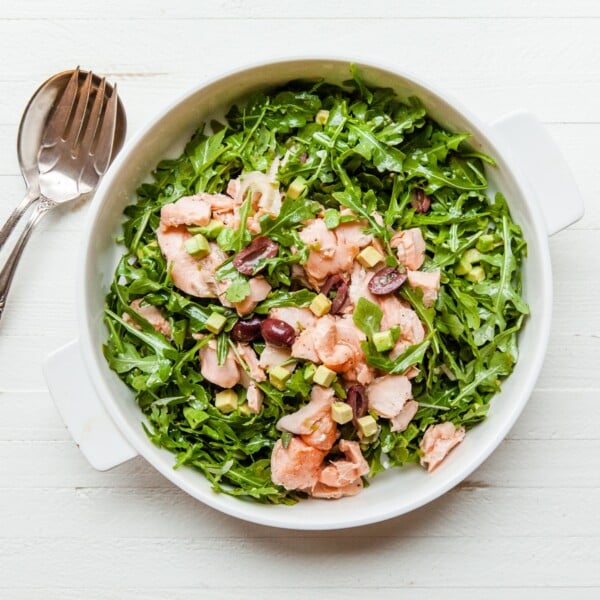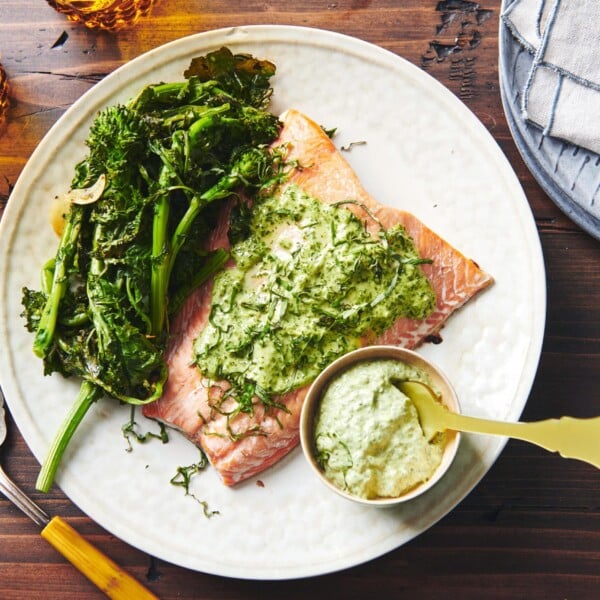Ginger Lemongrass Salmon
on Jan 01, 2024, Updated Jan 17, 2025
This post may contain affiliate links. Please read our disclosure policy.
Inspired by Vietnamese cuisine, this salmon recipe is full of flavor and a quick weeknight dinner option.
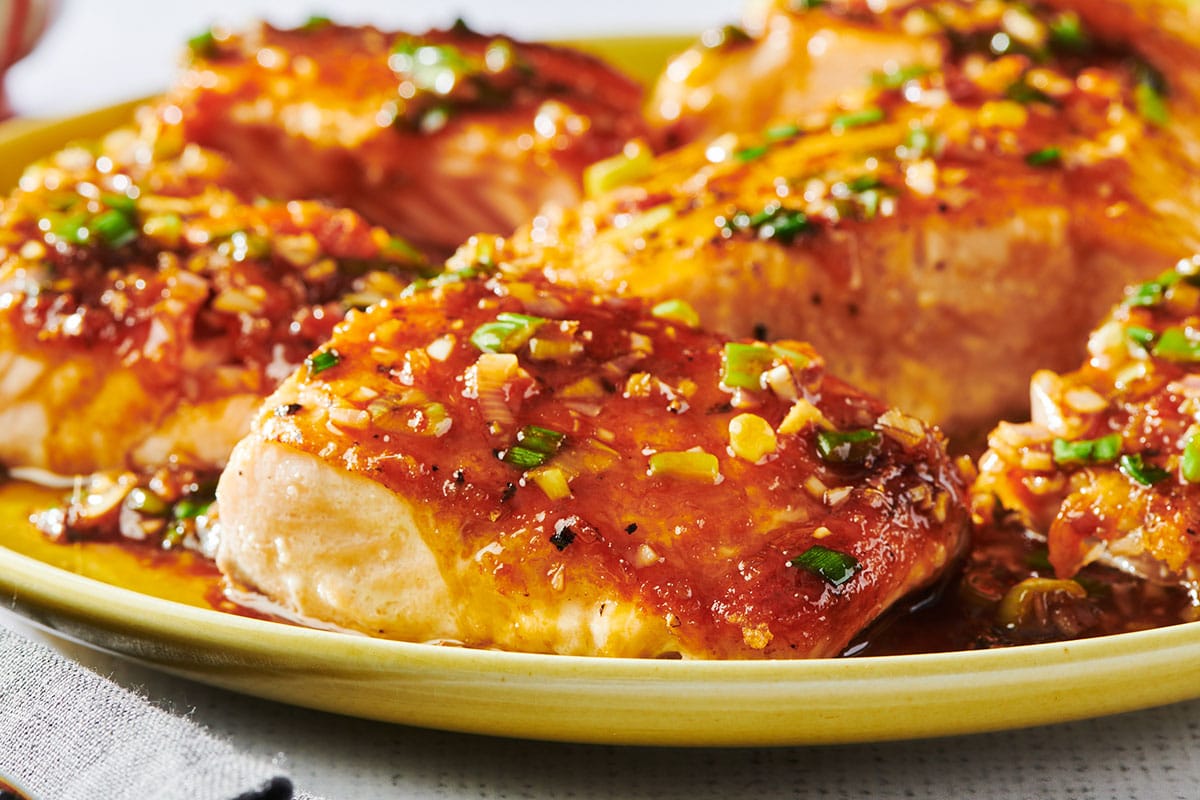
This Vietnamese-inspired salmon recipe is nothing short of fantastic. The rich fish is quickly pan-seared and then coated with a glaze-like sauce featuring lemongrass, ginger, garlic, and scallions.
And while it’s a simple enough dish for a weeknight dinner, it feels sophisticated enough for company. My friends all gave it an enthusiastic thumbs up, and while I made enough to plan for leftovers, once everyone went back for seconds, that hope was dashed. This is, however, a perfect example of why I make more than I think I need! And sacrificing my future salmon lunch is a small price to pay for making a meal that people are so excited about.
By signing up, you agree to our Privacy Policy.
Unless you are a carb-conscious eater, I highly recommend serving this Southeast Asian salmon with noodles or rice, white or brown. We also loved it with Vietnamese Garlic Noodles, Vietnamese cucumber salad, and Vegan Vietnamese Mango Salad. You will be happily stunned to see how quickly all three of these dishes come together. You can make that whole meal in about an hour, but it tastes like it took a whole lot more time and effort. I would also love this with Spicy Asian Greens, Vietnamese Mango Salad with Shrimp, Vegetable Stir-Fried Rice, or Simple Stir-Fried Broccoli.
What's In This Post?
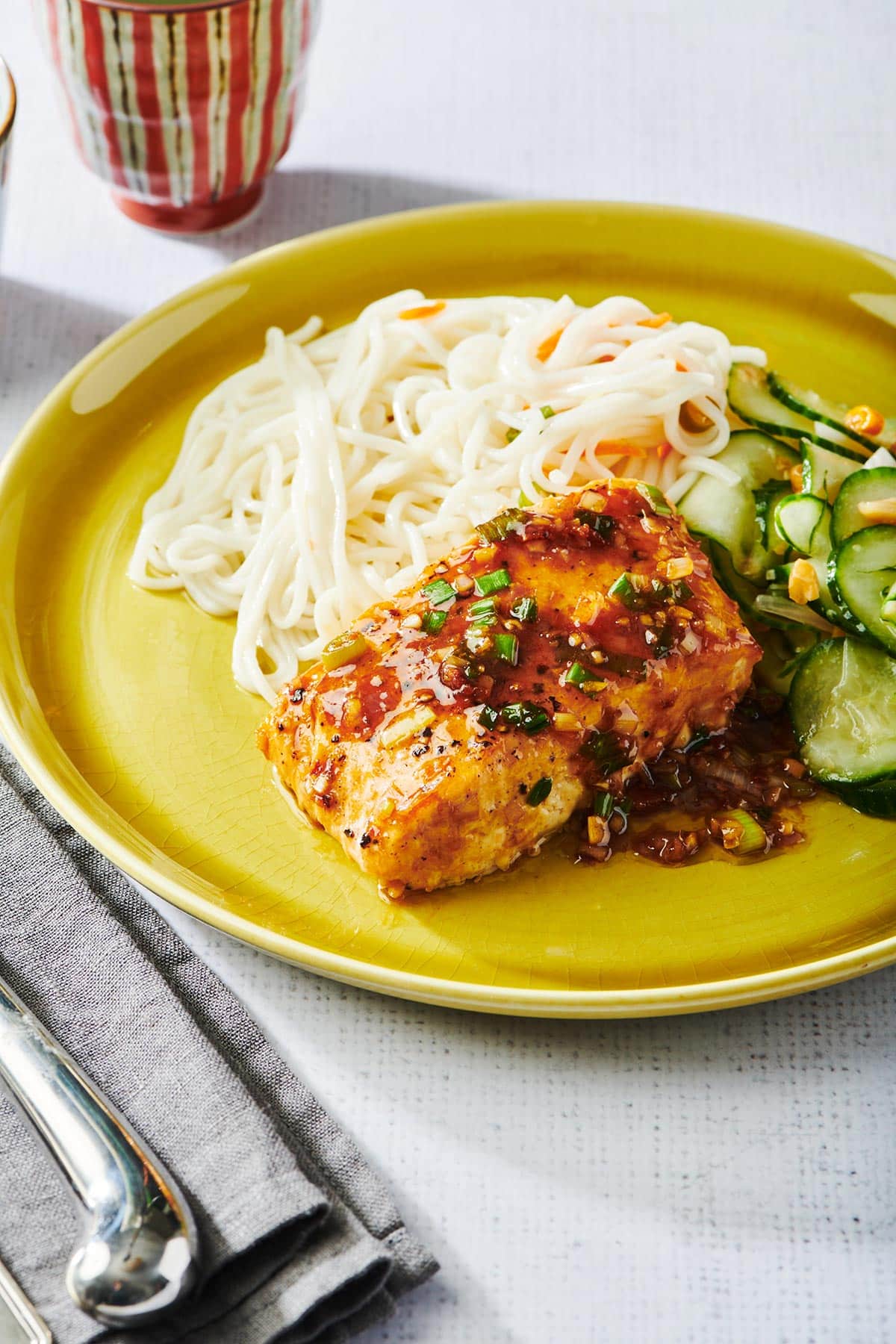
Inspired by Vietnamese cuisine, this ginger-lemongrass salmon recipe is full of flavor and a quick weeknight dinner option.
Ginger Lemongrass Salmon Ingredients
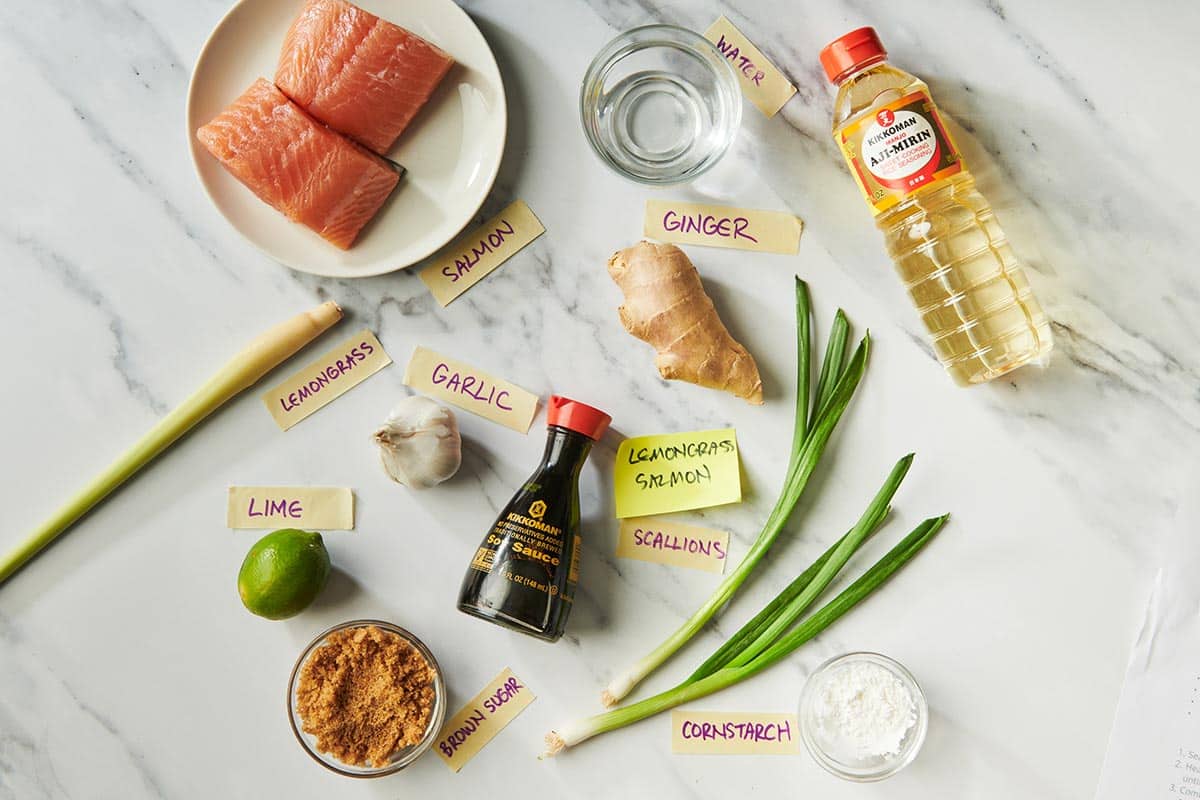
- Salmon – Our favorite fish, rich and lush. Cook it until it is done to your liking, from rare to cooked through. I like filets that are about 6 ounces in weight. You can decide if you want to cook skin-on or skin-off filets for this recipe.
- Cornstarch – Just a little bit thickens the sauce so that it becomes shiny and glazy.
- Lemongrass – Use the lower white inner part only, which is much more tender than the outer layers and the more fibrous top portion of the lemongrass.
- Garlic – Please use fresh if you can — it adds a bit of a bite.
- Ginger – Again, please use fresh. Learn how to peel ginger with a spoon and mince it.
- Scallions – I almost always use both the white and the green parts of the scallion. I hate waste, and I also like the color of the green tops. Plus, there is plenty of flavor throughout the whole scallion.
- Soy sauce – I use less sodium soy sauce in general, though here, the amount is quite small, so you can use whatever you have in the pantry. You can also use tamari sauce, which is gluten-free.
- Brown sugar – Adds just a touch of sweetness to the glaze.
- Mirin – A bit of rice cooking wine, which helps carry flavor. Mirin is available at liquor stores and keeps for a very long time in the fridge once opened, so if you cook a lot of Asian food, it’s a great ingredient to have on hand. If you don’t have it you can substitute sake, white wine, or skip it.
- Lime juice – A touch of acidity is indispensable in almost every recipe! You can easily sub in lemon juice or even a teaspoon of white wine vinegar.
How to Cook Lemongrass Ginger Salmon
- Prepare the salmon and sauce: Season the salmon with salt and pepper, going light on the salt. In a small bowl, combine the cornstarch with 1 tablespoon of water until dissolved.
- Cook the salmon: Heat the oil in a large skillet over medium-high heat. Add the salmon and cook for about 5 minutes on each side, flipping it carefully, until cooked to your liking. Remove to a plate.
- Make the sauce and serve: Return the pan to medium heat. Add the garlic, lemongrass, ginger, and scallions and stir for 1 minute until you can smell the garlic. Add the soy sauce, 2 tablespoons water, brown sugar, mirin, and bring to a simmer. Stir in the cornstarch mixture. Reduce the sauce by one-third, about 2 minutes; it will thicken up nicely.
- Serve: Remove from the heat and add the lime juice. Pour the hot sauce over the fish and serve with rice, if desired.
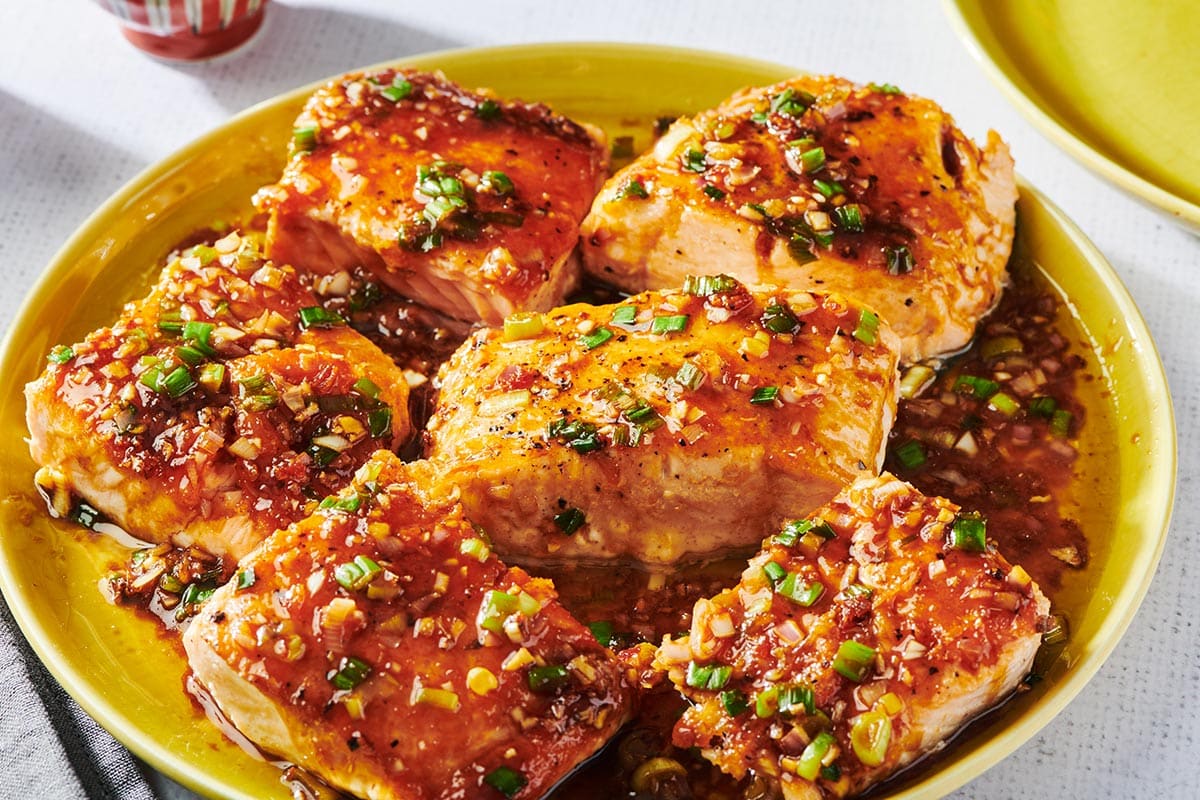
Lemongrass Ginger Salmon Cooking Tips
- The FDA recommends a safe internal temperature of 145 degrees for fish and shellfish. However, if you are using fresh, high-quality fish, you can cook to an internal temp of 135 degrees, which is the temperature for medium rare.
- Fully cooked salmon will be opaque throughout and flake easily with a fork.
- If you don’t have an instant-read thermometer (or maybe you just want to be sure), you can make a small cut with a paring knife into the fish and peek inside. Also, as with meat, you can use a touch method to determine if the salmon is cooked to your liking. Give the fish a little squeeze on the side. Medium-rare salmon should be fairly firm but feel softer towards the middle. Medium-well or well-done salmon will feel very firm. If you like the level of doneness, pull it from the pan right away.
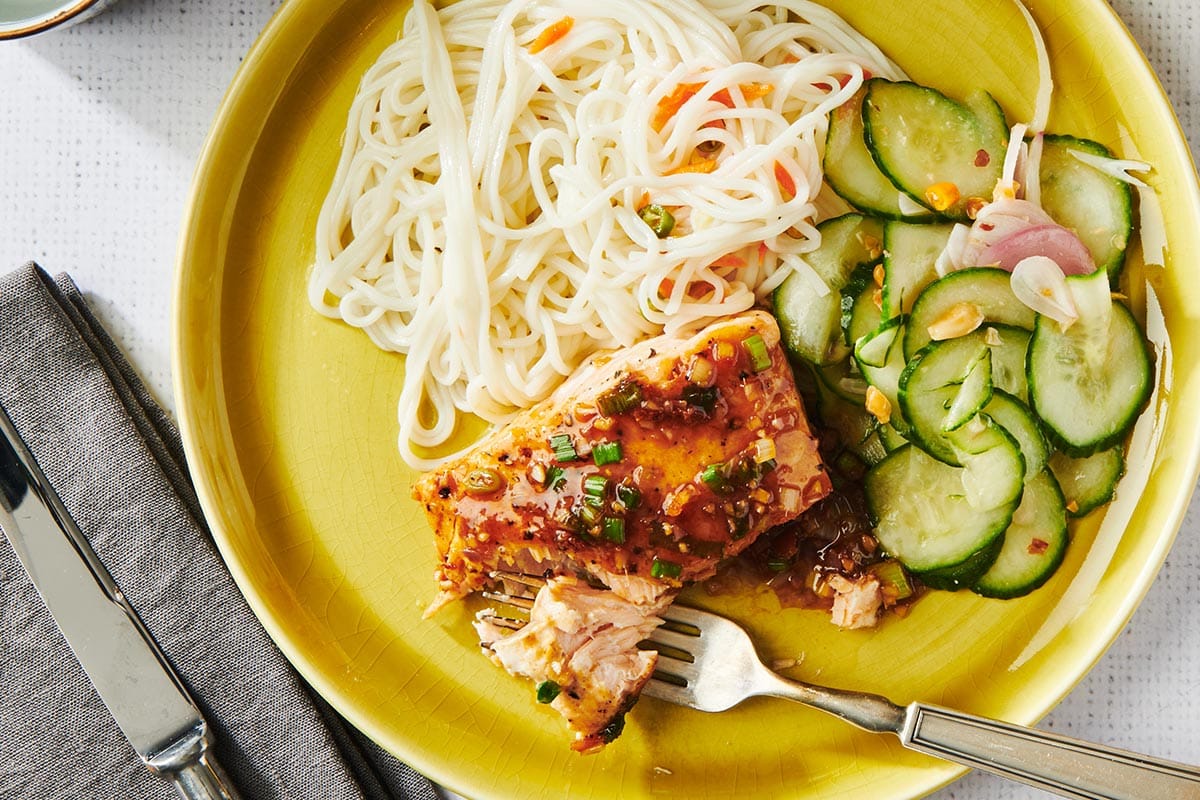
Salmon Cooking Times
The cooking time largely depends on the thickness of the filets and the level of heat under the pan. These are some starting time guidelines:
| Doneness | Total Cooking Time |
|---|---|
| Rare (dark pink in the center) | 7 to 9 minutes |
| Medium-Rare (a bit of translucent pink in the center) | 8 to 10 minutes |
| Medium | 10 to 11 minutes |
| Medium-Well | 1 to 12 minutes |
| Well Done | 12 to 13 minutes |
FAQs
Since salmon is a very moist, fatty fish, as long as you don’t overcook it, it shouldn’t dry out. In general, fish cooks very quickly and can go from perfectly cooked to dry in a couple of minutes. Stick close by, check the temperature or level of doneness often, and take it off the heat the moment it is done to your liking. Remember, it will cook a bit further off the heat.
The aroma and flavor of lemongrass is citrusy and bright. It adds a lemony and slightly minty flavor to dishes. It’s often used in Southeast Asian cuisine, such as Thai and Vietnamese. Lemongrass pairs well with rich, fatty salmon.
First, use a nonstick pan if you have it. If not, make sure to spray the pan with nonstick cooking spray, and be generous with the oil. Let the salmon cook until it releases itself from the pan naturally. Use a large, thin spatula, and when you flip it, make sure to slide it all the way under the fish.
If you cook a lot of fish, you might consider getting a fish spatula, which is very wide and made to lift whole fish and big fish filets. And when you serve the salmon, serve it with the prettiest side up!
Variations
Try hot honey in place of the brown sugar.
Squeeze a bit more fresh lime juice over the top if desired.
Storage and Leftovers
Leftover salmon can be kept in the fridge for 2 days. You can enjoy it at room temperature or warm it in the microwave for a minute. It can also be reheated in a preheated 300-degree oven for 5 minutes or so until warmed through. I don’t like to reheat cooked salmon until it’s super hot, as that tends to overcook the fish.
What to Serve With Lemongrass Ginger Salmon
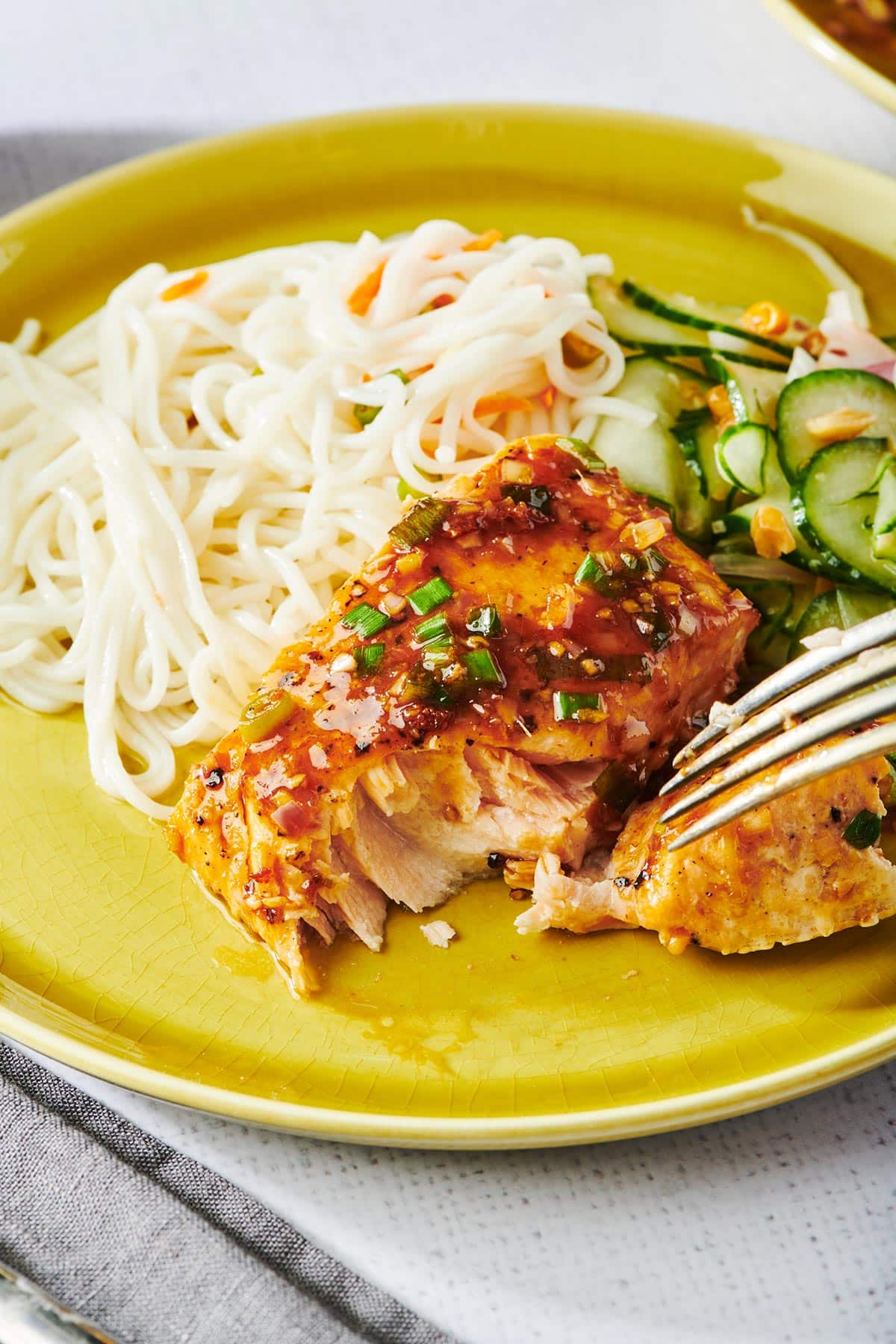
More Asian Salmon Dishes
Pin this now to find it later
Pin It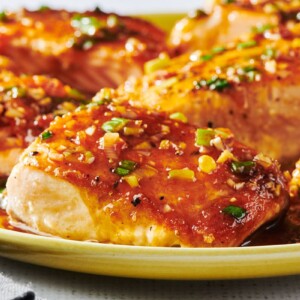
Ginger Lemongrass Salmon
Ingredients
- 4 salmon filets (about 6 ounces each)
- Kosher salt and freshly ground black pepper (to taste)
- 1 teaspoon cornstarch
- 2 tablespoons vegetable oil
- 1 teaspoon minced garlic
- 2 tablespoons minced lemongrass (white part only)
- 2 teaspoons minced fresh ginger
- 2 scallions (trimmed and thinly sliced; white and green parts)
- 2 tablespoons soy sauce (preferably less sodium)
- 2 tablespoons water
- 2 teaspoons brown sugar
- 1 tablespoon mirin
- 1 teaspoon lime juice
- Hot cooked rice to serve (to serve; optional)
Instructions
- Season the salmon with salt and pepper, going light on the salt. In a small bowl, combine the cornstarch with 1 tablespoon water until dissolved.
- Heat the oil in a large skillet over medium high heat. Add the salmon and cook for about 5 minutes on each side, flipping it carefully, until cooked to your liking. Remove to a plate.
- Return the pan to the medium heat. Add the garlic, lemongrass, ginger, and scallions and stir for one minute until you can smell the garlic. Add the soy sauce, 2 tablespoons water, brown sugar, mirin, and bring to a simmer. Stir in the cornstarch mixture. Reduce the sauce by one-third, about 2 minutes; it will thicken up nicely.
- Remove from the heat and add the lime juice. Pour the hot sauce over the fish and serve with rice, if desired.
